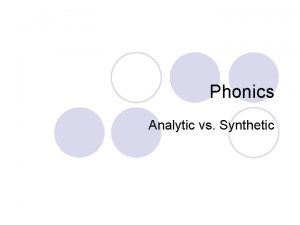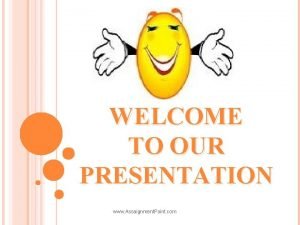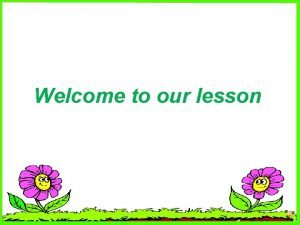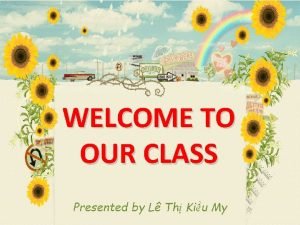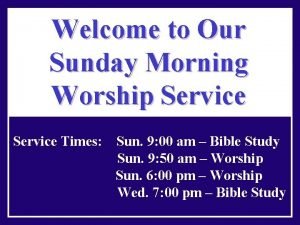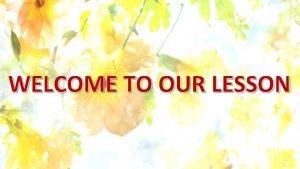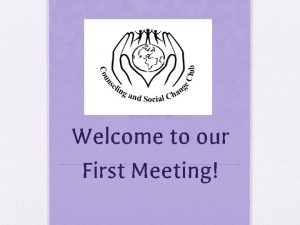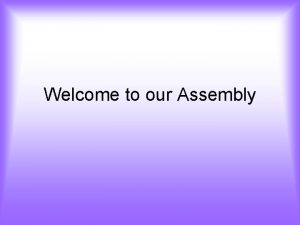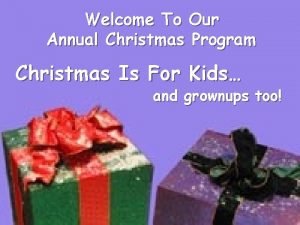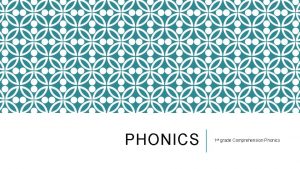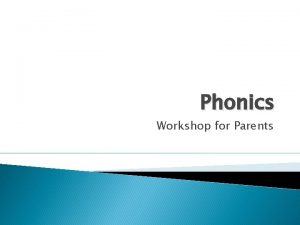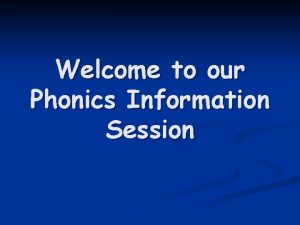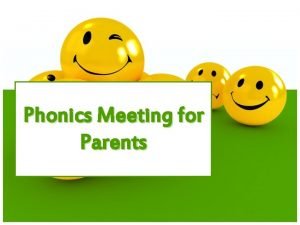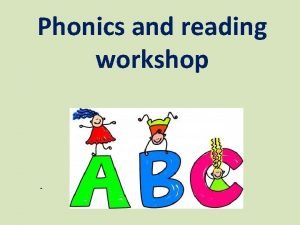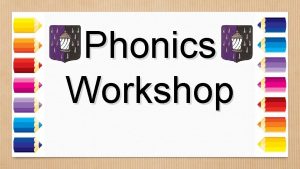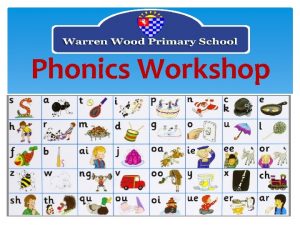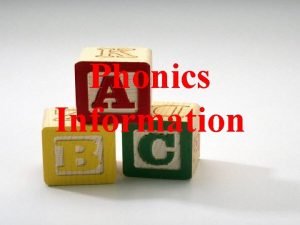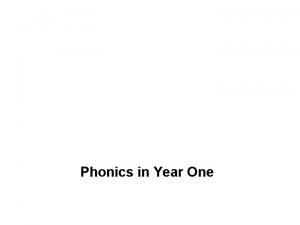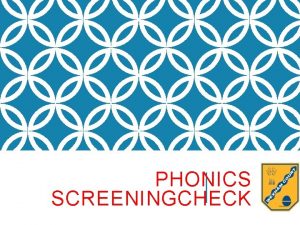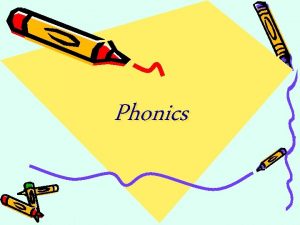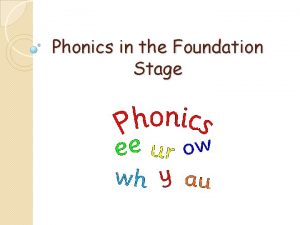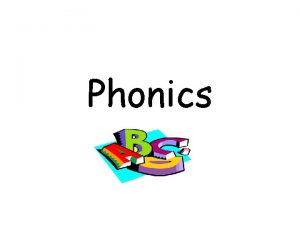Welcome to our phonics information workshop Why phonics





















- Slides: 21

Welcome to our phonics information workshop

Why phonics? n Impact on learning to read and spell n First strategy that children should learn n Runs alongside other teaching methods n Reading isn’t just phonics!

Read Everything and celebrate reading!

Technical words n Phoneme The smallest unit of speech – a single sound in a word. n Grapheme The written symbol that represents a sound.

n Digraph Two letters that make one sound n Trigraph Three letters that make one sound

The process of decoding a word has two stages.

Segmenting This involves listening for the sounds and deciding which letters represent those phonemes.

Blending Firstly the individual grapheme to phoneme correspondence is recognised and then the phonemes are blended into the word as it is read.

Letters and Sounds progression n n Phase 1 – alliteration, rhyming, tuning into environmental sounds. Phase 2 – Teaching of initial sounds, begin to blend for reading and segment for spelling. (s-a-t) Phase 3 – Introduce digraphs –(ch, sh, th, ai, ee) tricky words for reading and spelling. Phase 4 – blending CCVC and CVCC words – eg frog, tent. New tricky words. Phase 5 – alternative graphemes (ea, ay, a_e, e_e, i_e, o_e, u_e ), alternative pronunciation of graphemes, new tricky words.

Pronunciation of phonemes This video link shows how letters should be pronounced for synthetic phonics https: //www. youtube. com/watch? v=Ll. Tw 0 oi. LNys

Phonics - Phase 2 Focus on letter sound n Keep the sounds short n Sound buttons – blending for reading n dog pit

Phonics – Phase 3 n Children are introduced to digraphs and trigraphs. At the end of this phase, children should have a written symbol (grapheme) for every sound (phoneme). ch oa ow ure sh er oi th/th ng ar igh oo/oo ai or ear ee ur air

Phonics - Phase 4 Children are shown how to blend longer words together. CCVC words – frog, stop, clown CVCC words – tent, lunch, roast

Phonics - Phase 5 n Children learn the alternative graphemes for phonemes. For example the ‘ay’ phoneme can be written in many different ways Common - ay (play) , ai (train) , a_e (cake) Less common - eigh(eight) ey(they) a(bacon)

Phonics for spelling - Segmenting n Sound Buttons and Zips n Robot Arms and Phonics Fists n n n Children listen to the word and then chop it into each individual phoneme they can hear before writing it down. The focus is on phonetically plausible attempts. How many sounds can you hear in these words ? cat deep ship church

c a t p ee d sh i p ch ur ch

Phonics screening check All year 1 pupils are assessed to make sure that they have learned phonic decoding to an appropriate standard by the age of 6. All schools must complete the check in June of each year.

The phonics screening check comprises a list of 40 words and non-words which the child will read one-toone with a teacher. It only tests children’s phonic ability and does not take into account all the other reading strategies which they learn. How do we use the results of the phonics screen in school ? The phonics check will help us to identify the children who need extra support in phonics so they can receive the help they need to improve their reading skills. These children will then be able to retake the check in year 2.

https: //www. gov. uk/government/publication s/phonics-screening-check-samplematerials-and-training-video


Thankyou
 Welcome welcome this is our christmas story
Welcome welcome this is our christmas story Example of analytic phonics
Example of analytic phonics Hey bye bye
Hey bye bye Don't ask why why why
Don't ask why why why World university of bangladesh
World university of bangladesh Welcome to our worship service
Welcome to our worship service Assaignment
Assaignment Welcome to city guesser
Welcome to city guesser Welcome to our lesson
Welcome to our lesson Our english class
Our english class Wellcome to our class
Wellcome to our class Can we have conversations
Can we have conversations Lions club organizational structure
Lions club organizational structure Welcome sunday service
Welcome sunday service Welcome to the lesson
Welcome to the lesson Welcome to our first meeting
Welcome to our first meeting Welcome to your english class
Welcome to your english class Welcome to our class
Welcome to our class Welcome to our class
Welcome to our class Welcome to our assembly
Welcome to our assembly Welcome to our christmas program
Welcome to our christmas program Slidetodoc.com
Slidetodoc.com

